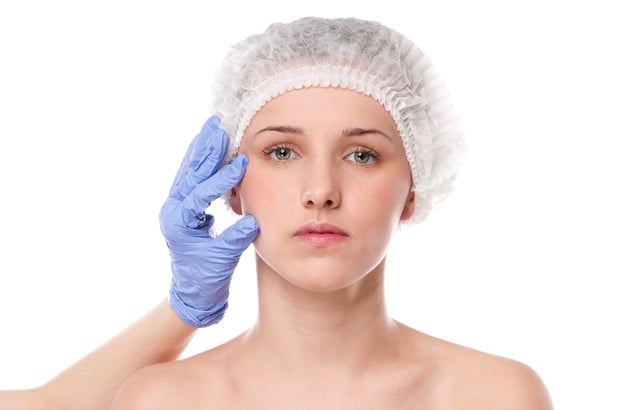Regardless of whether we follow it, the rule of thumb is that you should get a checkup from your primary doctor once every year. But there’s one equally important annual appointment that often gets tossed to the side: an exam with a dermatologist.
Every hour, one person in the United States dies from melanoma, which is the deadliest form of skin cancer and has one of the fastest growing incidence rates in the world. With statistics as scary as those, it’s a wonder more people don’t get their skin checked regularly.
Dr. Marnie Nussbaum of the DC-based Melanoma Research Alliance says that while any time of year is a good time to get a skin exam, she often sees a rise in cases after summer—thanks to those glowing, but dangerous, tans and painful sunburns. Read on for warning signs to look out for and what to expect at your next skin exam.
Does everyone need to see a dermatologist annually?
Absolutely everyone should see a dermatologist at least once a year—unless they notice anything new or any change in size, shape, or bleeding. Also, if they have a history of skin cancer, [their visits] may be more frequent.
Do you often see a rise in skin cancer diagnoses after summer?
It’s not necessarily a rise, it’s just that more people are aware of their skin, so there are more diagnoses after the summer. A lot of what we do see is terrible burns after the summer—that puts you at risk the rest of your life. One blistering sunburn can double your risk of getting skin cancer.
Is there a best time of year to get your annual skin exam?
A lot of people think the winter is the best time because you’re paler, so it’s easier to see growths as they emerge. But really any time of year is fine as long as you remember to get checked once a year. I always say, “Check your birthday suit on your birthday,” just so people remember. But really, if you ever see anything new or changing, come right in—don’t wait for your annual appointment.
When giving yourself a skin exam, what are some major things to look out for?
I always say check your “A-B-C-D-Es.” A is for asymmetry, or an oddly shaped mole. B is for border—if something has an irregular border. C is for color—whether there’s more than one color present. D is for diameter—if something is bigger than 6 millimeters, or the size of pencil eraser. E is for evolution—if anything is changing. But it’s important for people to realize it’s not just brown things that can be dangerous. It could also be flesh-colored or scaly patches of skin.
Is there anything people should know or do before going into a skin exam?
The one thing I always say is that skin cancer can be in your scalp, mouth, eyes, and genital areas, so those areas should be checked. When you go for your skin exam, you should not have nail polish on, because cancer can also be found in the fingernails. African-Americans are more likely to get it in their palms and nails—Bob Marley died from melanoma that was found under his toenail. Also, make sure you get fully undressed. A lot of patients tell me they didn’t take their socks off. Wearing makeup is fine, but it’s much easier to go without makeup.
For everyday face moisturizers, what SPF number should people use?
Definitely 30 SPF or higher. The label should also say that it protects from UVA and UVB rays.
The end of summer means the loss of the beloved summer tan. Since tanning beds are not recommended, can you suggest a safe self-tanning lotion someone can use at home?
Tanning beds increase risk of melanoma by 75 percent. That’s an astounding statistic that proves no one should be using tanning beds. Most sunless tanning products contain a chemical called DHA (dihydroxyacetone). Previously, it was thought that it didn’t get absorbed, but new studies show it does get absorbed into the skin. It’s especially dangerous in spray tans when you inhale. This is new and just starting [to be studied], and more studies need to be done about the chemicals. At this point I would just say be comfortable in the skin you’re in. And in general, no tan is a safe tan. It’s your body trying to protect your skin cells.












